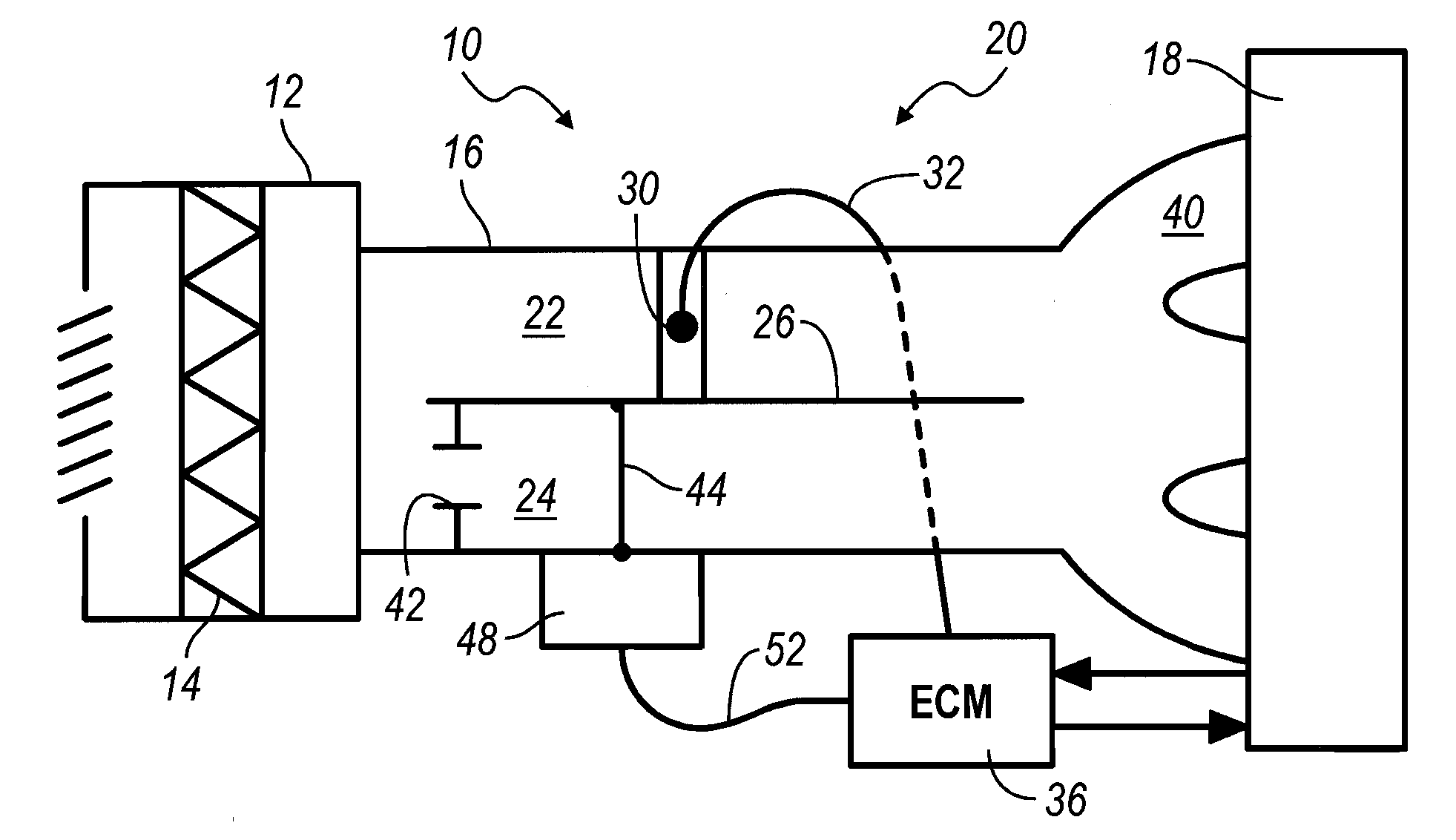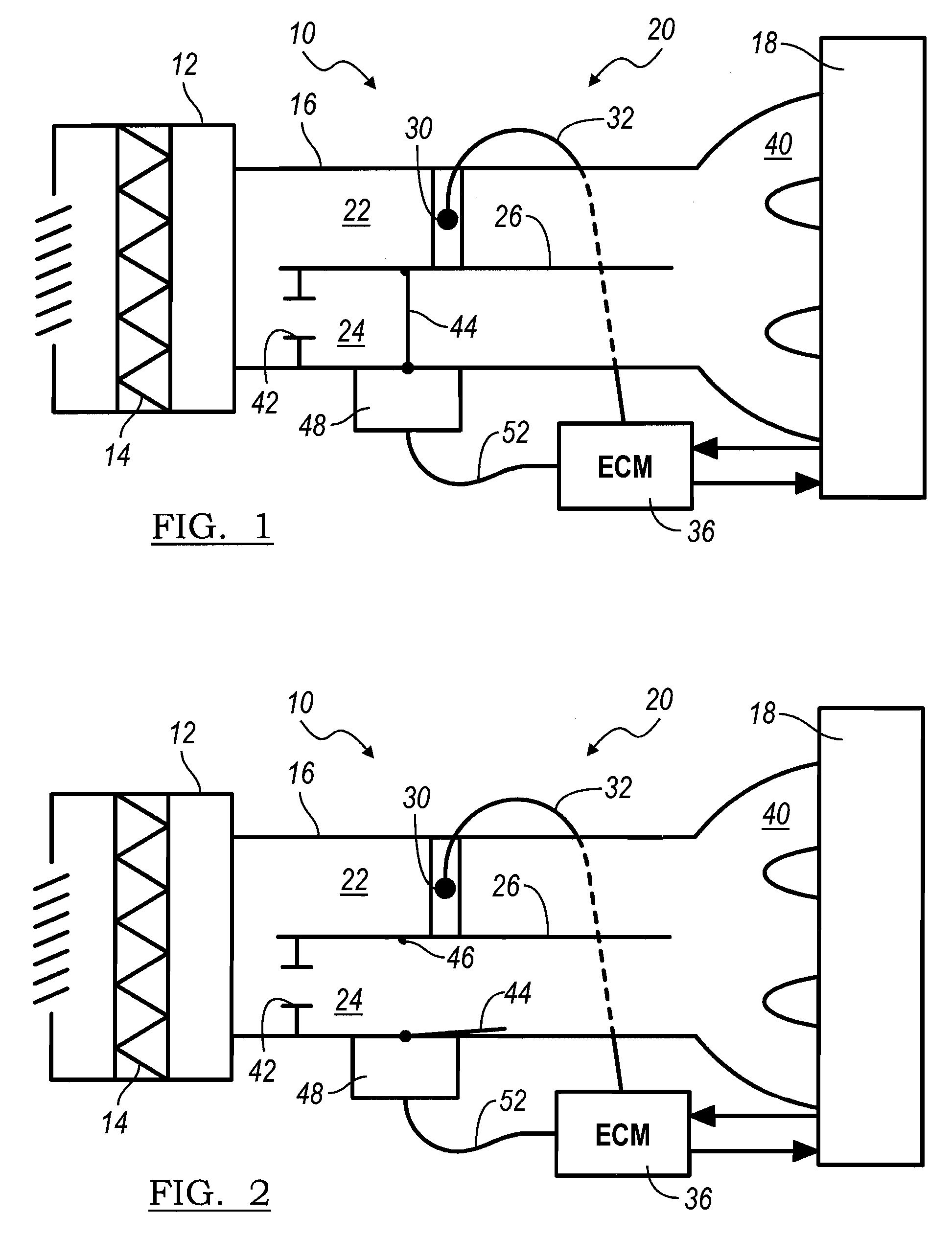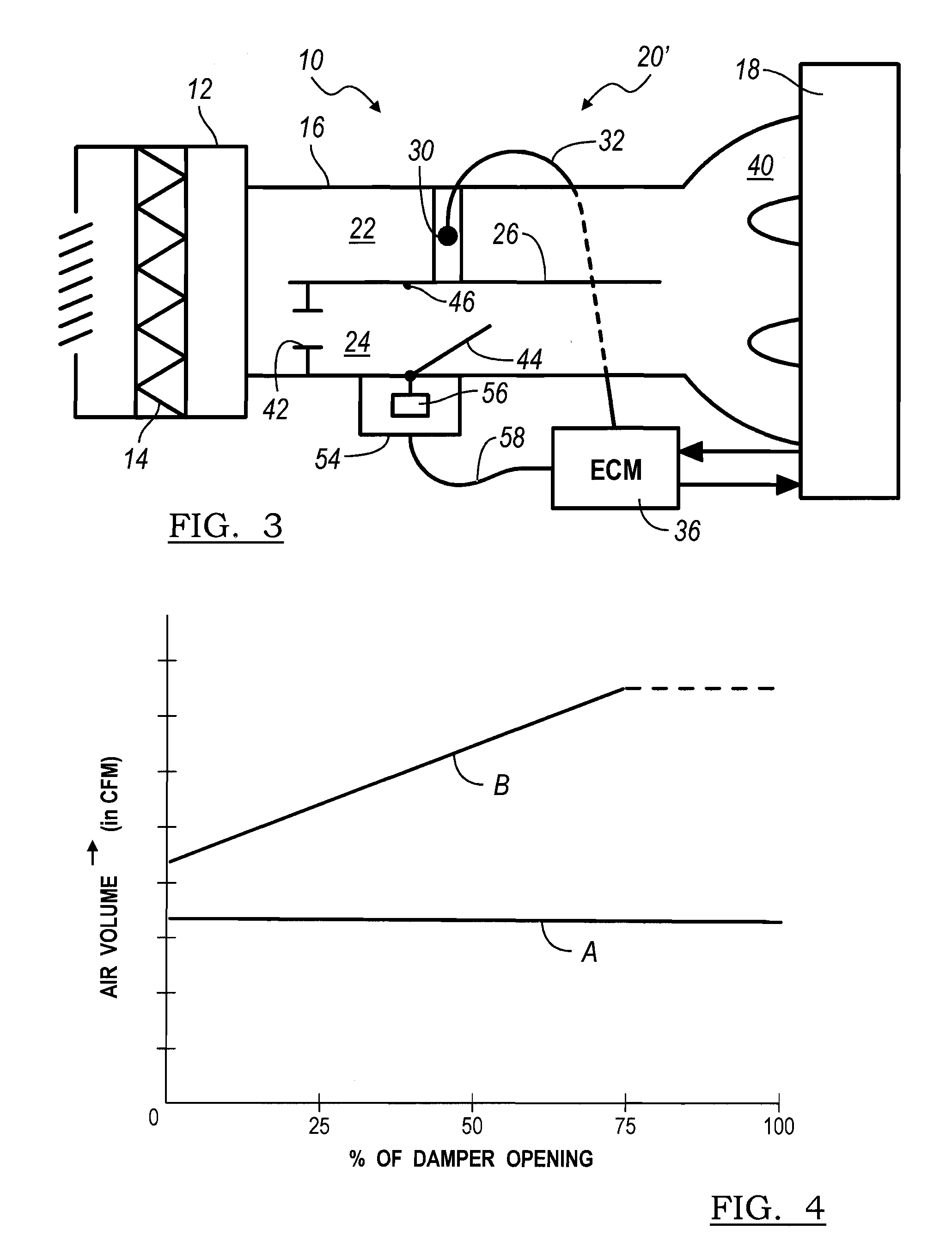Multiple path air mass flow sensor assembly
a sensor and air mass technology, applied in the direction of instruments, electric control, combustion air/fuel air treatment, etc., can solve the problems of difficult accurate flow measurement, large volume of air provided, and difficult to improve the many conflicting operational parameters of the last several decades, so as to improve the high-volume air flow, reduce flow resistance, and improve measurement accuracy
- Summary
- Abstract
- Description
- Claims
- Application Information
AI Technical Summary
Benefits of technology
Problems solved by technology
Method used
Image
Examples
Embodiment Construction
[0021]Referring now to FIG. 1, an inlet or intake duct assembly for an internal combustion engine is illustrated and designated by the reference number 10. The intake duct assembly 10 includes an air filter assembly 12 which draws in ambient air and includes an air filtration element 14. The air filter assembly 12 communicates with an air inlet or intake duct 16 which provides combustion air to an internal combustion engine 18. In a first embodiment of an air mass flow sensor assembly 20 according to the present invention, the air inlet or intake duct 16 is separated into a first, sensing duct 22 and a second, bypass duct 24 by a divider or partition 26. While illustrated as parallel, it should be understood that the first, sensing duct 22 and the second, bypass duct 24 may be separate, non-parallel and sinuous or convoluted, for example, to fit within available under-hood space or match and connect to air inlet and engine components.
[0022]Disposed within the first, sensing duct 22 ...
PUM
 Login to View More
Login to View More Abstract
Description
Claims
Application Information
 Login to View More
Login to View More - R&D
- Intellectual Property
- Life Sciences
- Materials
- Tech Scout
- Unparalleled Data Quality
- Higher Quality Content
- 60% Fewer Hallucinations
Browse by: Latest US Patents, China's latest patents, Technical Efficacy Thesaurus, Application Domain, Technology Topic, Popular Technical Reports.
© 2025 PatSnap. All rights reserved.Legal|Privacy policy|Modern Slavery Act Transparency Statement|Sitemap|About US| Contact US: help@patsnap.com



